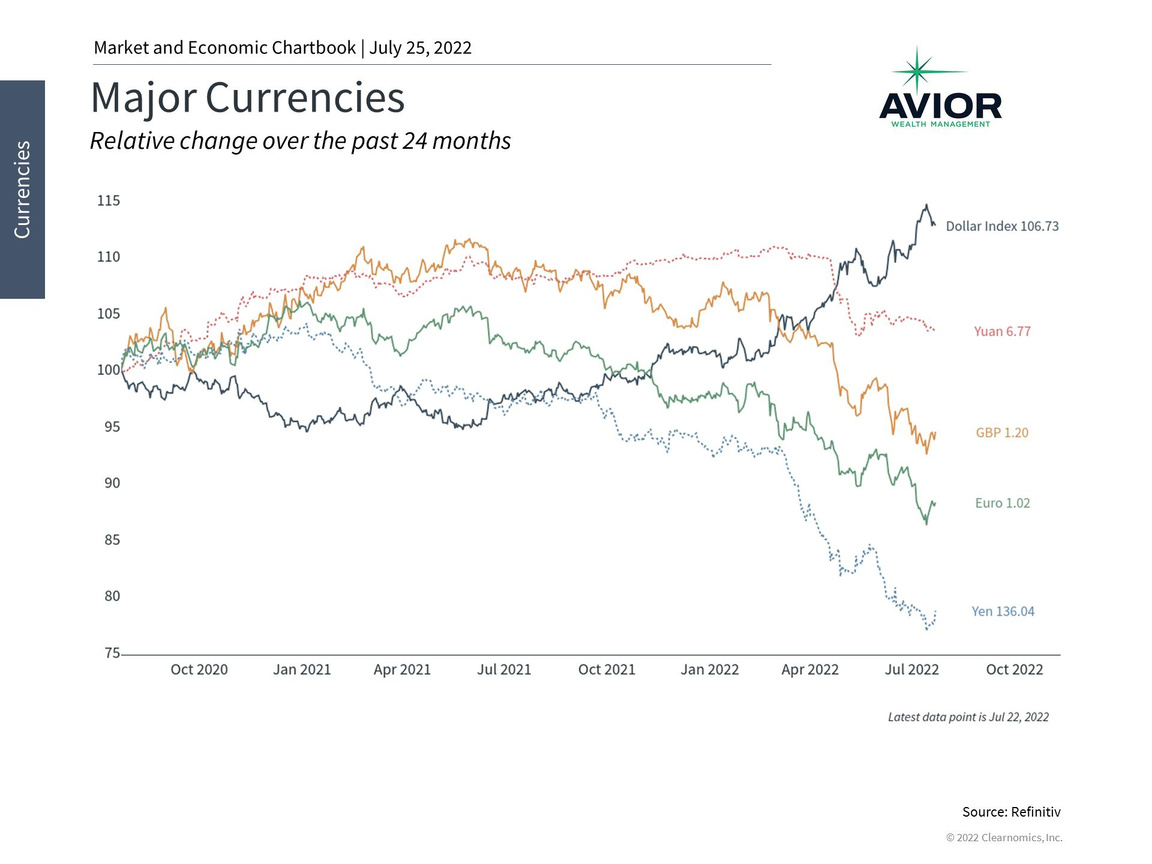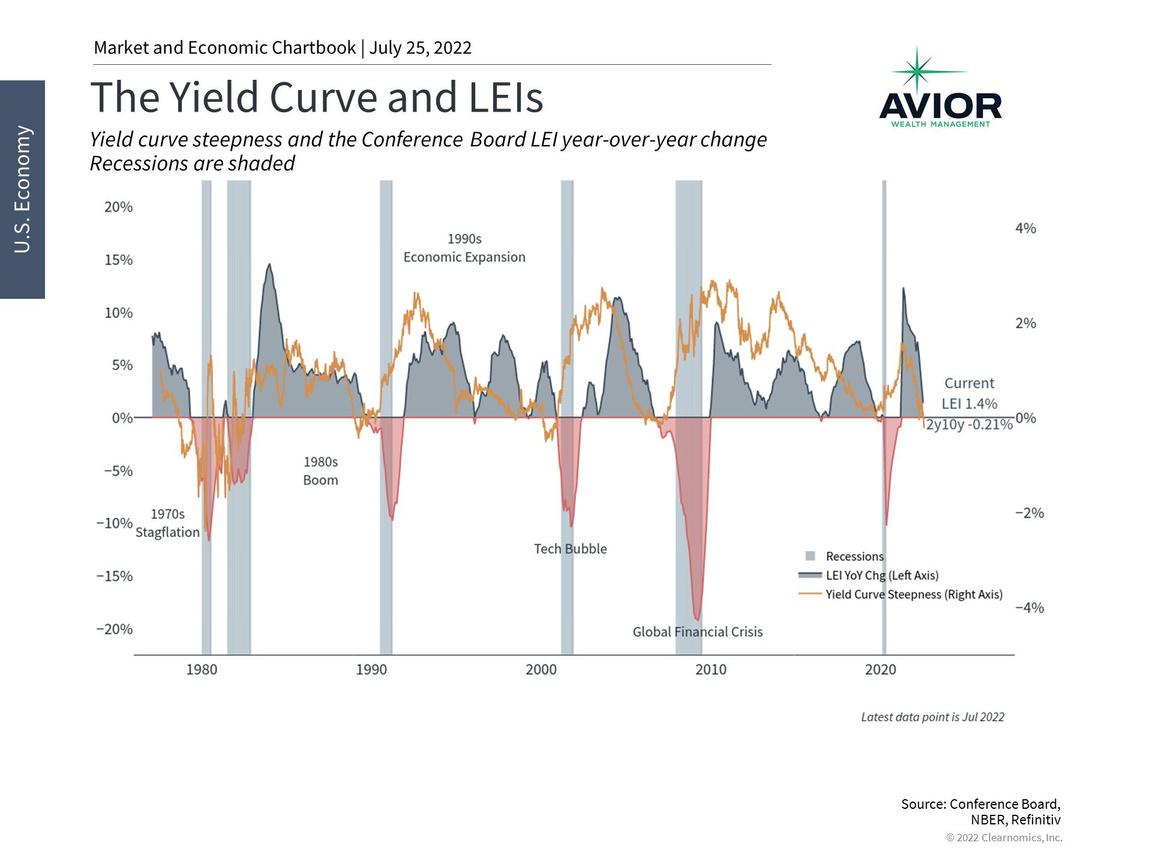AVIOR INSIGHTS – What the Fed, GDP and the Dollar Mean to Long-Term Investors
Typically, GDP reports are closely followed but entirely backward-looking since they reflect events that took place the previous quarter. GDP reports can shed light on the magnitude of the impacts on consumer, business and government spending, as well as trade activity. However, this week’s report will be scrutinized for another reason – whether or not it will be the second consecutive quarter of negative growth, which some consider to be a sign of a recession.
The money supply has grown significantly since 2020

GDP, Money Supply and Velocity
The current consensus estimate among economists is that the economy grew about half of one percent in the second quarter. Even if this turns out to be wrong, this would not be unexpected given rising inflation. What is driving this inflation, how long it will last, and who is politically to blame are matters of heated debate.
One contentious area is around the money supply and whether this has driven prices higher across the economy. The chart above shows one measure of the money supply known as M2 which includes components such as U.S. currency, checking and savings accounts, and money market funds. This measure rose dramatically as the Fed responded to the pandemic.
However, unlike the cost of oil which has clearly driven gasoline prices higher for consumers and businesses, the jury is still out on the long-term effects of loose monetary policy. Historically, inflation has been worsened or prolonged by central bank errors. If there is too much money chasing the same amount or fewer goods and services, then the prices of those goods and services will rise.
But the supply of money isn’t the only factor here. The concept of the “velocity of money” matters too – it measures how many times each dollar flows through the system. If there are many more dollars, but they move through the system fewer times, then growth and inflation could remain the same. This is one reason that the stimulus after the crisis of 2008 never spurred inflation – velocity fell as banks held onto reserves and slowed their lending activities. This is also what we see over the recent period – the velocity of money has plummeted because nominal growth has not picked up faster than the growth in the money supply.
A stronger dollar naturally tightens economic conditions

Major Currencies
First, a strong dollar is great news for American travelers and consumers buying foreign goods who will find that their currency goes much further. This naturally lowers inflation since the prices that consumers pay will decline. In theory, a stronger dollar and lowers oil prices, since the commodity is mostly denominated in U.S. dollars.
Second, a strong dollar also slows the economy somewhat since foreign buyers will find U.S. dollar-denominated products more expensive. This can also drive down inflation since there will be less demand for certain goods and services. Thus, a stronger dollar naturally tightens financial and economic conditions which may slow the economy, but perhaps more importantly combats inflation.
Leading indicators suggest the economy is slowing but in a controlled fashion

The Yield Curve and LEIs
The bottom line? Although inflation and growth are the biggest concerns for investors, it is still important to stay invested and diversified, especially given attractive market valuations.
Avior Wealth Management, LLC, 14301 FNB Pkwy, Suite 110, Omaha, Nebraska 68154, United States, 402-810-7831
No Comments
Sorry, the comment form is closed at this time.




